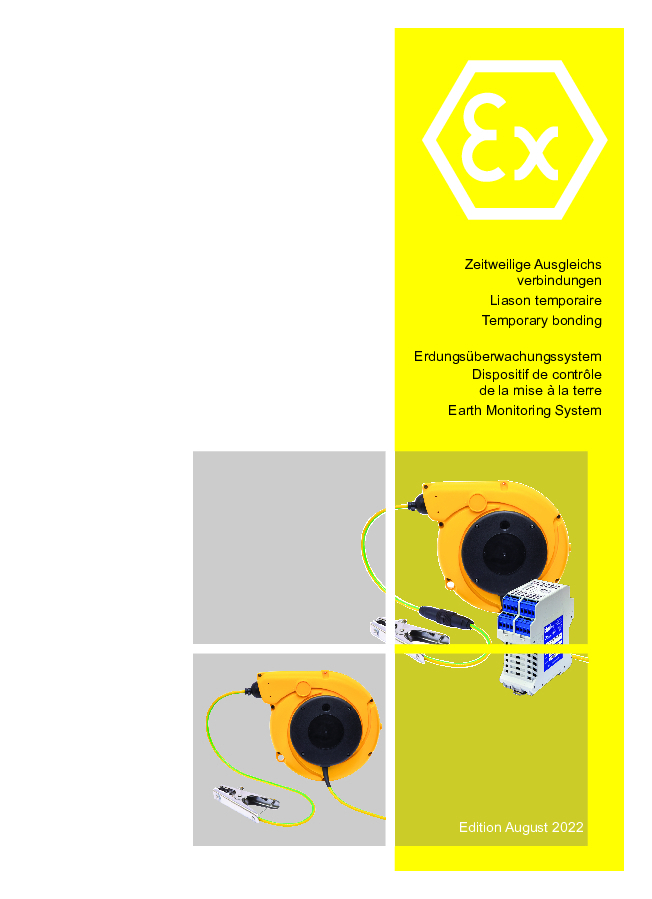Earth monitoring system EAD 09

Prevention of electrostatic charges as ignition source
In many cases electrostatic charges are immediately associated with industrial processes such as transferring, emptying or filling. They can not only cause breakdowns and damage, but can also spark off fires and explosions. When assessing hazards due to electrostatic charges, the decisive factor is the probability of the local and temporal concurrence of an explosive atmosphere and a dangerously high charge.
Such a concurrence is most probable when the handling of a product leads to both a dangerously high charge and to the formation of an explosive atmosphere. This applies, in particular, for the handling of flammable liquids such as, for example, hydrocarbons or other nonpolar solvents or non-conductive, combustible bulk materials.
However, conductive materials can also be charged to a dangerously high degree if they are processed in non-conductive installations or if, during operation, a separation of charges occurs. Furthermore, non-conductive installations themselves or conductive installations that are not earthed can be charged to a dangerously high degree. Examples of fires and explosions caused by static electricity as the ignition source range from the filling of a plastic canister with toluene to the pneumatic filling of a large silo with a combustible bulk material. Other typical examples of accidents include the filling of driers with a product that is damp due to solvents, the emptying of centrifuges and the emptying of combustible bulk materials out of flexible bulk material containers.
PDF 🢃 3.5 MB










